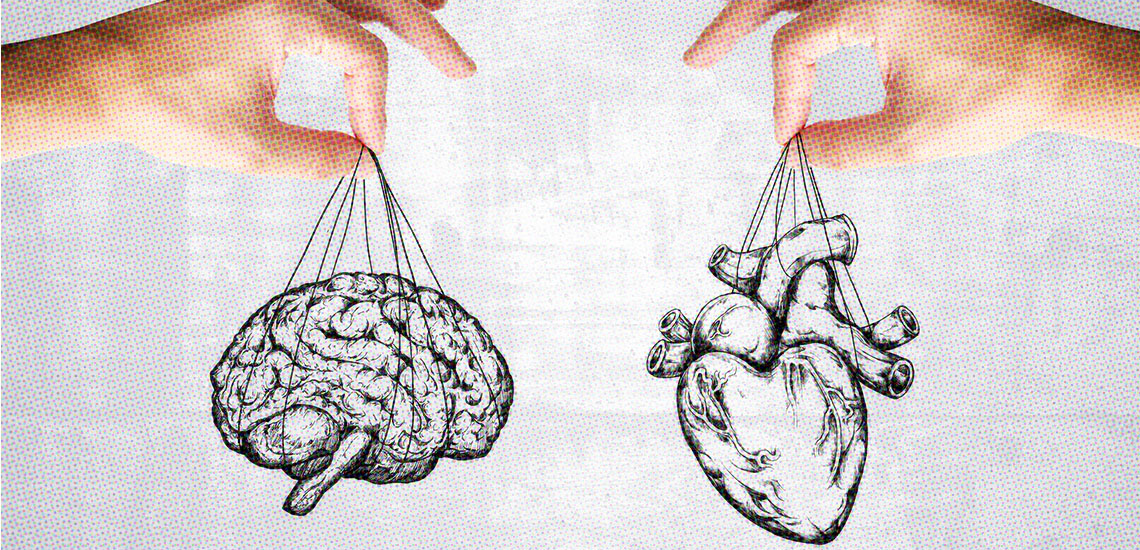Why do we buy the things we buy? Why do we choose the things we choose? Is it because of value, taste, preference? Or is it because of something we don’t even realise?
Many people like to think that deliberate, conscious thought is at the heart of their day-to-day decisions. In reality, we are far more affected by the unconscious, impulsive, automatic drivers of choice than we’d like to admit.
These often-imperceptible forces are what we call System 1 thinking—and it’s the space that every marketer and brand professional should want to own.

How does System 1 play into brand?
The human brain is remarkably efficient. Provide it with two ‘routes’ of cognition and it will nearly always pick the path of least resistance. This is due to System 1 thinking: a realm of mental shortcuts. See something, feel something; act. Rational thinking and conscious evaluation (System 2) comes later—and requires effort.
For brand marketers, System 1 can be either extremely beneficial or extremely detrimental, depending on what feeling or impulse is associated with their brand. If a person has linked a restaurant with childhood nostalgia, it will be hard to break that level of emotional warmth and loyalty. But if they associate it with food poisoning, it is equally difficult to claw them back.
Mark Vincett, Head of Research at Sapien, explains further:
“Brands are mental shortcuts in and of themselves: a symbol of what they stand for.”
No matter how rational you might hope your audience is, System 1 thinking always comes first. How we remember a brand largely depends on how they make us feel.
Most people don’t know the impact that System 1 has on their own choices—they often don’t even know they are being affected by it in the first place. Trying to tease out that kind of unconscious bias is incredibly difficult. A survey question that relies on conscious consideration will rarely get to the root of the matter.
That’s why Sapien has invested in implicit association testing: a methodology designed to unveil the hidden world of System 1 and help a brand truly shape and define what it stands for—and move it towards what it wants to stand for.
How can brands better influence choice through understanding System 1?
System 1 thinking is impacting your brand perceptions. What can you actually do about it?
The first step is to understand what your brand truly symbolises for people. You must measure how they actually feel about it, not what they claim to feel. This is done through implicit association testing and can determine what brand attributes need to be focused on to build the desired emotional connections. See our guide to evaluating packaging design to explore this further.
Other System 1 thinking that brands can harness comes from the behavioural science realm. We’ll turn to Kahneman & Tversky, whose research was fundamental in identifying mental shortcuts and revealing what impact they have on our judgements and memory.
Sapien draws on hundreds of these “shortcuts” when analysing behaviour and brand connections. Common examples include:
- Availability bias. This is a shortcut that relies on using recent, immediate examples that come to a person’s mind when evaluating something. In other words, people will use their most recent experiences in their System 1 evaluation rather than anything else. If your audience has had a recent bad experience with your brand, they are far more likely to use that as an evaluation point rather than the slew of positive ones they’ve had in the past.
- Peak-end effect. This shortcut impacts what we remember, people base their evaluations of an experience on how they felt at its most intense point and at its end, rather than an average of the entire experience. For example the perception of a retail brand would be strongly influenced by the checkout experience. If it was strongly positive, or negative, it would dictate how they’d evaluate their experience when considering the brand overall.
- Difficulty in abstraction. Our minds are not equipped to deal with certain kinds of problems i.e. those that are distanced from us, abstract, and contested. For finance brands that focus on retirement savings, where the benefit of saving is in the distant future, this can be a major barrier to success.
Once identified and understood, there are two methods that brands can use to nudge people towards the behaviour that you want.
- Push. Brands can push people towards engaging System 2 behaviours when considering their brand—making them think about more functional, logical reasons to engage with the company. A common example is appealing to value-seeking behaviour by discounting prices or providing other incentives. The simple act of disruption can shake them from System 1 autopilot to a more considered and rational choice. The Push method requires people to engage in effortful thinking—something we generally prefer not to do.
- Ease. Given the human brain will always choose the easier path, brands should try to make positive associations be that easier path. This could mean:
- Optimise packaging: With so many products on-shelf to choose from, we default to the brands and their associated pack cues that come most easily to mind. Be that “default”, and you control the choice.
- Harness availability bias: Ensure good news stories about your brand vastly outweigh any possible bad news ones.
- Counteract difficulty with abstraction: Use the power of social norming to make the abstract, concrete: communicating the large number of people saving for retirement to counteract the ‘distance’ of the benefits, for example. By not doing it, you become the odd one out.
- Use the peak end effect: It’s going to build a retail brand long term if customers leave the store feeling positive; a smile, a chat, or an unexpected benefit will work wonders.
System 1 is an often overlooked but incredibly powerful marketing asset if leveraged correctly. Win over somebody in their subconscious, and you’ll have created a fan whose loyalty is hard to crack.
Learn more about Sapien's unique approach to idea testing and speak to one of our experts today to start your journey towards identifying ideas that work.





